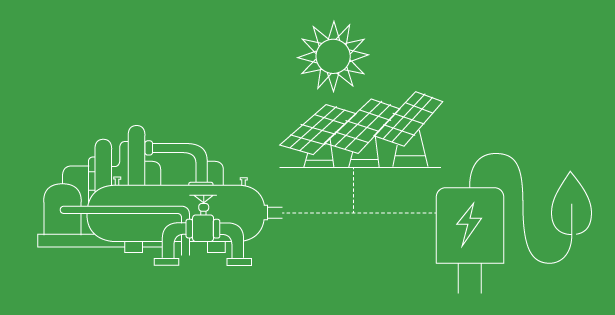Microsoft Fabric, a unified analytics platform, has garnered significant attention in the sustainability space for its promise to streamline data-driven decision-making. Combining the best of Power BI, Synapse, and Azure Data Factory, Fabric offers a comprehensive environment to collect, transform, and analyze data within a single ecosystem. For sustainability professionals, its integration capabilities, real-time analytics, and intuitive user interface make it a compelling tool to address complex environmental challenges.
What Stands Out?
The five capabilities of Microsoft Sustainability Data Solutions in Fabric are what differentiate this platform from others emerging in the market.

Integration of these capabilities results in a wide array of advantages, including:
- Unified Data Environment: Fabric consolidates various data sources into a seamless environment, reducing the friction of data silos. This is critical for sustainability, where data often comes from diverse systems—energy meters, IoT sensors, supply chain software, and more.
- Real-Time Insights: With live data integration and built-in AI capabilities, organizations can monitor carbon emissions, energy usage, or supply chain efficiency in near real-time.
- Scalability: Fabric’s cloud-first architecture ensures it can handle large datasets and complex analytics without performance bottlenecks. For global sustainability efforts, this scalability is invaluable.
- Microsoft Sustainability Manager Integration: Fabric’s compatibility with Microsoft Sustainability Manager enhances its value, enabling streamlined ESG reporting and compliance tracking.
How Do We Predict It Will Be Used?
Microsoft Fabric is poised to become a cornerstone for organizations aiming to meet ambitious sustainability goals. Here are a few predicted applications:
- Lower technology costs and increase ESG disclosure quality: SDSF will help reduce costs by centralizing ESG data, eliminating multiple tools, and leveraging AI-driven automation to minimize manual effort. Its serverless, pay-as-you-go model optimizes resources, while pre-built ESG connectors ensure seamless compliance. SDS also enhances disclosure quality through standardized reporting, real-time AI insights, and built-in auditability, improving transparency and governance across finance, sustainability, and operations teams.
- Carbon Accounting and Reporting: Organizations will leverage Fabric to automate Scope 1, 2, and 3 emissions tracking. By integrating data from IoT devices and third-party systems, businesses can ensure accurate and timely reporting aligned with global standards.
- Harmonize Disparate Enterprise Data into ESG Datasets: Numerous data sources are required to accurately capture a complete picture of a business’ direct and indirect emissions throughout their supply chain. By utilizing the Fabric solution’s capabilities, metrics ranging from process emissions to purchased electricity consumption become available. This will continue to be a critical capability as data sources are integrated to enhance reporting specifically around the vast amount of Scope 3 value chain activities.
- Out-of-the-box Semantic Model Resources: Working with multiple data sources typically requires increased time and effort to prepare the data and construct pipelines for ingestion; with the Fabric solution, all that is required is source access and connection. From here, Microsoft has developed transformation logic and ingestion methods that compute and store data within regulatory standards.
Final Thoughts
Microsoft Sustainability Data Solutions in Fabric are a game-changer for sustainability analytics, offering unparalleled integration and analysis capabilities. Its potential applications, including increasing quality of disclosures while lowering the cost of disparate technologies, carbon tracking, and supply chain optimization—make it an essential tool for forward-thinking organizations. As businesses and governments intensify their sustainability efforts, Fabric will play a pivotal role in achieving data-driven environmental goals.
Reducing your company’s emissions isn’t just about compliance, it’s a strategic advantage. With the right sustainability data solutions, you can cut costs, streamline regulatory reporting, and drive meaningful environmental impact. Connect with RSM to discover how data-driven insights can help you optimize operations, meet sustainability goals, and improve your bottom line.

 RSMUS.com
RSMUS.com![Transforming Sustainability Reporting for a Vertically Integrated Agriculture Producer [Case Study]](https://technologyblog.rsmus.com/wp-content/uploads/featured-images/all/industry-blog_fb_v1_blue.png)



